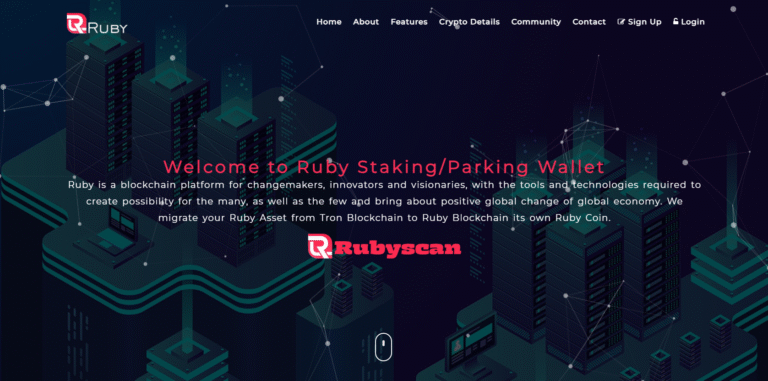Table of Contents
Introduction to Ruby
This article provides a comprehensive Ruby review and examines growing concerns about whether Ruby scam claims are valid. Ruby is promoted as a digital currency focused on secure, fast transactions and blockchain-based payment solutions. The project claims registration in an offshore jurisdiction, but there is limited information on regulatory oversight. This raises the critical question: is Ruby a scam or a legitimate cryptocurrency platform? This Ruby review explores the warning signs and potential risks that every investor should know.
Our audience includes those who may have already invested in Ruby and seek reliable information about its legitimacy, as well as individuals considering Ruby but are cautious before putting their money at risk. We address these concerns with a focus on clarity and actionable insights, recognizing the frustration and skepticism that naturally arises.
Ruby: Regulation & Legal Status
Ruby currently lacks oversight from major financial regulators such as the SEC, FCA, or ASIC. Occasionally, marketing materials reference regulatory compliance, but no verifiable licenses exist to confirm these claims. Registration in offshore jurisdictions does not provide the same protections as regulated entities.
Investing in unregulated cryptocurrencies carries significant risks, including the absence of dispute resolution, client protection, or operational transparency. Similar tactics have been observed in other fraudulent crypto projects. For guidance, see learn how to spot a scam broker before it’s too late. The absence of clear regulation raises serious questions about whether Ruby is a scam.
Trading Conditions & Platform Analysis of Ruby
Ruby transactions occur mainly through decentralized wallets and select exchanges, without conventional account types, spreads, or leverage. The platform promotes “instant and secure AI-powered transfers,” yet transparency regarding liquidity and execution methods is limited.
Be wary of unrealistic claims of guaranteed profits, high returns, or zero fees. Even with a functional interface or blockchain tracking tools, transparency issues remain. For thorough evaluation, visit what to check before signing up with a trading platform. These gaps make it difficult to dismiss the notion that Ruby might be a fraud.
Reputation & User Reviews About Ruby
User feedback on Ruby is limited, with few trading volumes reported on platforms like CoinMarketCap or CoinGecko. Online reviews often include unverifiable testimonials and suspiciously positive comments. Multiple complaints highlight withdrawal delays and insufficient support.
Exercise caution when consulting sites such as Trustpilot reviews of Ruby, as many reviews may be fabricated. Low user engagement and limited traffic suggest that the project is still in its early stage or potentially high-risk.
How to Test Whether Ruby Is a Scam
To determine whether Ruby is a scam, take the following steps:
- Check regulation: Verify licenses with authorities like SEC, FCA, or ASIC. Ruby has none.
- Red flags: Watch for vague licensing, anonymous team members, and promises of guaranteed profits.
- Review user experiences: Investigate complaints on crypto forums and verified review platforms.
- Evaluate platform quality: Poor design or unknown wallets may indicate higher risk. Use ScamDoc to assess website credibility.
- Test withdrawals: Try small transactions to confirm payment reliability.
Following these steps can help investors make informed decisions and avoid common cryptocurrency scams.
Final Verdict & Alternatives
While Ruby markets itself as a secure, fast blockchain currency, the lack of regulatory oversight, transparency, and verifiable user data signals caution. The red flags outweigh potential benefits, and investors should approach with skepticism.
Safer alternatives include well-regulated cryptocurrencies such as Ethereum, Binance Smart Chain, and Polygon. Always prioritize trading and investing through licensed, audited platforms to protect your funds.



